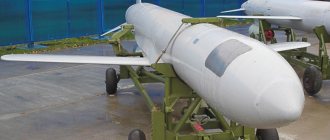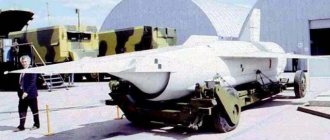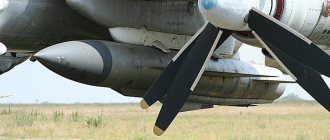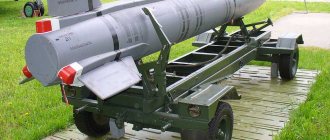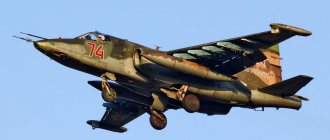First steps
The history of the development, creation and further full-scale development of Russian cruise missile technology is directly related to the work and development of a number of Soviet scientists. The very idea of the possibility of using the lifting force of a wing to fly rockets in the lower atmospheric layers was expressed and justified by K. Tsiolkovsky, F. Zander and Yu. Kondratyuk in the early 30s of the last century. They were able to emphasize and receive confirmation of a number of advantages of the aviation principle of propulsion over the rocket-dynamic one, and in addition they put forward the idea of using cruise missiles for the urgent delivery of goods over long distances. Thus, a problem was formulated, the search for optimal solutions for which led the design engineers B. Stechkin and V. Vetchinkin to develop the theory of air-breathing engines (WRE) and the basic principles of the flight dynamics of cruise missiles.
A group for the study of jet propulsion was created and in 1933 the USSR began the first work in history on the creation of guided cruise missiles with a liquid engine, which were continued at the Jet Research Institute. S. Korolev, V. Glushko, B. Rauschenbach, E. Shchetinkov, S. Pivovarov, M. Dryazgov and a number of other Soviet specialists made significant contributions to the development of missiles of this type.
The Second World War
Work in this area was not suspended even during the Second World War. At this time, the first samples of guided cruise missiles were developed. They differed from the traditional weapons that existed at that time in their ability to deliver a large explosive charge over long distances through the use of the combined thrust of a jet engine and the lift of a wing.
During the same period, V. Chelomey developed and successfully tested a pulsating air-breathing engine (see figure), which later began to be used on cruise missiles. The first such missile was the 10X missile, intended to arm the Pe-8 aircraft. Testing of 10X began in March 1945. Between 1944 and 1954. In the Soviet Union, several types of cruise missiles with pulsating jet engines were developed and constructed. At the same time, V. Chelomey, who continued to work in this area, substantiated the idea of opening the rocket wing in the air. This technical solution, which received worldwide recognition, made it possible to place cruise missiles on ships, “packing” them into compact containers. At the same time as Soviet engineers, German designers were also developing cruise missiles, including guided missiles.
Simultaneously with the development of cruise missiles, primarily the V-1 missile for striking ground targets, work was actively underway on the creation of aircraft missiles for firing at surface ships. In particular, the Germans developed a whole family of cruise missiles to attack convoy ships from the air. They could be launched against surface targets by bombers without entering the air defense zone of convoy ships, which significantly increased the invulnerability of attacking aircraft.
To increase the likelihood of hitting surface ships in Hs series cruise missiles, along with an autopilot, they began to install various types of telecontrol systems, but it was not possible to significantly improve accuracy. The still insufficient speed and rather low maneuverability of the missiles did not contribute to ensuring high efficiency of firing at fast-moving targets and, in addition, made them easily vulnerable to being hit by shells from naval anti-aircraft defense systems or fighter aircraft. All this, combined with insufficient guidance accuracy, gave military specialists every reason to consider further work on the development and improvement of cruise missiles to be unpromising.
Almost at the end of World War II, the German Air Force abandoned the deployment of cruise missiles of the Hs-293 type on surface ships, and used them from time to time exclusively to destroy stationary ground targets, mainly crossings. Work on the creation of new technical projects was frozen in the post-war years and was not resumed for about two decades.
Links[edit]
- "Remotely Piloted Aircraft: 'Aerial Target' and 'Aerial Torpedo' in the UK". Ctie.monash.edu.au. Retrieved February 13, 2012.
- Roger Branfill-Cook, "Torpedo", Seaforth Publishing, UK 2014
- "[1.0] Aerial Torpedo". August 13, 2007 Archived from the original on August 13, 2007.
- “Object No. 212”, report 1936 in the _Creative Heritage of Academician Sergei Pavlovich Korolev_
- ↑
Both missiles were made with intensive use of Nazi slave labor. - ↑
The Evolution of the Werrell Cruise Missile, Kenneth P. see PDF page 92. Archived March 4, 2007, at the Wayback Machine. - Operation Bumblebee [ circular link
] - "Russia to refit nuclear-powered guided missile cruiser with 3M22 Mach 5 hypersonic missiles with 2022 deployment - NextBigFuture.com". February 21, 2016.
- "Conclusion mais uma etapa do projeto de desenvolvimento de um veículo hipersônico". Brazilian Air Force
(in Portuguese). February 21, 2022. - "Brasil pondrá a prueba el 14-X en la Operación Cruzeiro". Infodefensa.com
(in Spanish). March 3, 2022. - "Hypersonic version of Brahmos on the way". Times of India
. October 9, 2011 - "Archival copy". Archived from the original on December 12, 2010. Retrieved 23 February 2012.CS1 maint: archived copy as title (link)
- Philip, Snehesh Alex (June 12, 2019). "DRDO tests futuristic missile technology, but its success is in doubt". ThePrint
. Retrieved March 23, 2022. - "DRDO begins work on next generation hypersonic weapons". Hindustan Times
. October 20, 2022. Retrieved March 23, 2022. - "BrahMos Air Launch Completes India's Supersonic Cruise Missile Triad: Five Things You Need to Know". November 23, 2022.
- "Supersonic stealth missile". Retrieved October 8, 2015.
- "Upgraded BrahMos with 500 km range ready: BrahMos Aerospace CEO". PTI
. Retrieved August 29, 2022. - Janes - Perseus: MBDA rocket of the future? Archived November 13, 2011, at the Wayback Machine.
- "International Institute for Strategic Studies - IISS". Archived from the original on June 28, 2012. Retrieved October 8, 2015.
- Harding, Thomas (21 June 2011). "New UK missile three times faster than current weapon". Telegraph.co.uk
. Retrieved October 8, 2015. - MBDA System Archiving May 12, 2013 at the Wayback Machine
- "PARIS: Perseus is about to attack". flightglobal.com
. June 22, 2011. Retrieved October 8, 2015. - (Ret.), Col Y. Udaya Chandar (2017). Modern weapons of the world's armed forces. Notion Press. p. 314. ISBN 978-1-946983-79-4.
- Chandar, Col. Y Udaya (2017). Modern weapons of the world's armed forces
. Notion Press. ISBN 978-1-946983-79-4. - "Iran to unveil its new indigenously produced Meshqat cruise missile in near future". Retrieved October 8, 2015.
- https://navalnews.net/turkey-one-step-closer-to-develop-indinent-cruise-missile/
- Yumit Enginsoy. "BUSINESS - Türkiye seeks to increase ballistic missile range". Hurriyetdailynews.com. Retrieved February 13, 2012.
- "TÜBİTAK: Hedefimiz 2 bin 500 km Menzilli füze yapmak - Hürriyet EKONOMİ". Hurriyet.com.tr. January 14, 2012. Retrieved February 13, 2012.
- "Türk Füzesi SOM İçin Geri Sayım Başladı - Haber - TRT Avaz". Trt.net.tr. Retrieved February 13, 2012.
- "FOTO: Caça F-5M voando com o míssil de cruzeiro MICLA-BR" (in Portuguese). Poder Aéreo. October 1, 2022.
- Ukraine tests advanced subsonic cruise missile Neptune, Defense World, January 31, 2022, retrieved January 31, 2022.
- “Yerli seyir füzesi, 180 kilometreden hedefini vuracak - Hürriyet Gündem.” Hurriyet.com.tr. Retrieved February 13, 2012.
- “Yerli seyir füzesi, 180 kilometreden hedefinin vuracak – Kirpi HABER Cesur | Özgür | Tarafsız Habercilik". Kirpihaber.com. Archived from the original on June 7, 2011. Retrieved February 13, 2012.
- "Raytheon: Tomahawk Cruise Missile". www.raytheon.com
. Retrieved September 19, 2016. - https://comptroller.defense.gov/Portals/45/documents/defbudget/FY2017/FY2017_Weapons.pdf#page=63
- “American missiles are blowing up Syria; Trump demands 'an end to the massacre'."
- "Hatf 7" Babur "".
- ^ ab "India successfully tests its first nuclear-capable cruise missile". Times of India
. November 7, 2022. - "Nuclear-tipped Nirbhay cruise missile test fails for fourth time - Times of India". Times of India
. December 21, 2016. Retrieved December 21 +2016. - "Hatf 7" Babur "- Missile Threat". CSIS.org
. Retrieved July 26, 2022. - The Diplomat, Ankit Panda and Prashant Parameswaran, The. "Strategic stability in South Asia and Pakistan's Babur-3 submarine-launched cruise missile". Diplomat
. Retrieved December 1, 2022. - "Pakistan Announces Cruise Missile Success". BBC News
. 2022. Retrieved December 1, 2022. - The Diplomat, Ankit Panda, The. "Pakistan Tests Homegrown Anti-Ship Cruise Missile". Diplomat
. Retrieved January 13, 2022. - Rihanna
Haider, Mateen (April 9, 2016).
"Pakistan Navy operationalizes Zarb coastal anti-ship missile after successful test". DAWN.COM
. Retrieved January 17, 2022. - "Nuclear-capable Nirbhay cruise missile test fails for fourth time".
- Mason, Shane. "Pakistan's Babur and Raad cruise missiles: Strategic implications for India". Institute for Peace and Conflict Research
. Retrieved January 20 +2016. - "X-101 - Nuclear forces of Russia and the USSR". fas.org. Retrieved February 13, 2012.
- ↑
Arkin, William (May 1983).
"Soviet Missile Programs". Arms Control Today
.
13
(4): 3–4. JSTOR 23623103. - "Cruise missile career comes to an end". US Air Force, Tinker Air Force Base Public Affairs. April 24, 2012 Archived from the original on December 20, 2013. Retrieved December 27, 2012.
The evolution of anti-ship cruise missiles
Design thought actively developed existing ideas: a number of scientific and technical achievements in the field of engine building and fuel chemistry made it possible to improve the parameters of cruise missile engines by an order of magnitude, and a kind of breakthrough in the field of radio electronics made it possible to qualitatively improve their guidance systems and significantly increase accuracy. There are three main stages in the development of anti-ship cruise missiles:
- Until 1970. The firing range of such missiles did not exceed a distance of 20 km. A telecontrol system was used via radio commands, including a radio altimeter to stabilize the flight at an extremely low altitude above the sea surface (3-5 m). In some models, the control system was equipped with an infrared homing head to achieve the most accurate guidance on the final section of the trajectory. The warhead was high-explosive or cumulative high-explosive with detonation at the side of the ship, weighing 100-140 kg. The flight speed of cruise missiles of this generation was subsonic. The launch and sustainer propulsion systems were equipped with a solid propellant rocket engine.
- From 1970 to 1978 The maximum firing range has been increased to 100 km, with a maximum detection range by shipborne radar stations within 80-90 km. The control system was inertial automatic with a radio altimeter and homing at the final part of the trajectory using an infrared or radar head. The warhead, as a rule, was high-explosive or penetrating semi-armor-piercing, weighing 200-300 kg. In the target area, anti-ship cruise missiles of this generation performed an anti-aircraft maneuver: a slide (climb) followed by a dive onto the target deck. A solid propellant engine was always used as a starting propulsion system; either a solid propellant engine or a turbocompressor air-breathing engine was installed on the main propulsion system. The flight speed of second-generation missiles is already transonic.
- From 1978 to today. The firing range is 300 km or more. The control system is inertial automatic with a radio altimeter and homing at the final part of the trajectory using an active or passive infrared or radar head. The warhead is similar to second generation missiles. The launch propulsion system has a solid propellant engine, and the main propulsion system has a ramjet engine.
Content
- 1. History
- 2 General design 2.1 Guidance systems
- 3.1 Hypersonic
- 4.1 Nuclear warhead versions 4.1.1 China
From drawings to combat use
The first major precedent for the combat use of cruise missiles, including anti-ship missiles, was the Arab-Israeli conflict of 1967. A significantly increased protection of missiles from countermeasures and their greater effectiveness in terms of hit accuracy were noted. As a result of subsequent local conflicts, in particular the Indo-Pakistani, Arab-Israeli 1973, as well as the Anglo-Argentine campaign of 1982, cruise missiles established themselves as the main strike weapon of the navy.
Today, armed with cruise missiles, including anti-ship missiles, aircraft, surface ships and submarines can perform a wide variety of combat missions and pose a potential danger to surface ships of any type. Almost all of the most developed countries have adopted cruise missiles of various specifications into service and are working to further improve anti-ship cruise missiles.
But, despite all this, I would like humanity to stop the senseless buildup of military potential and turn its activity into a peaceful channel.
